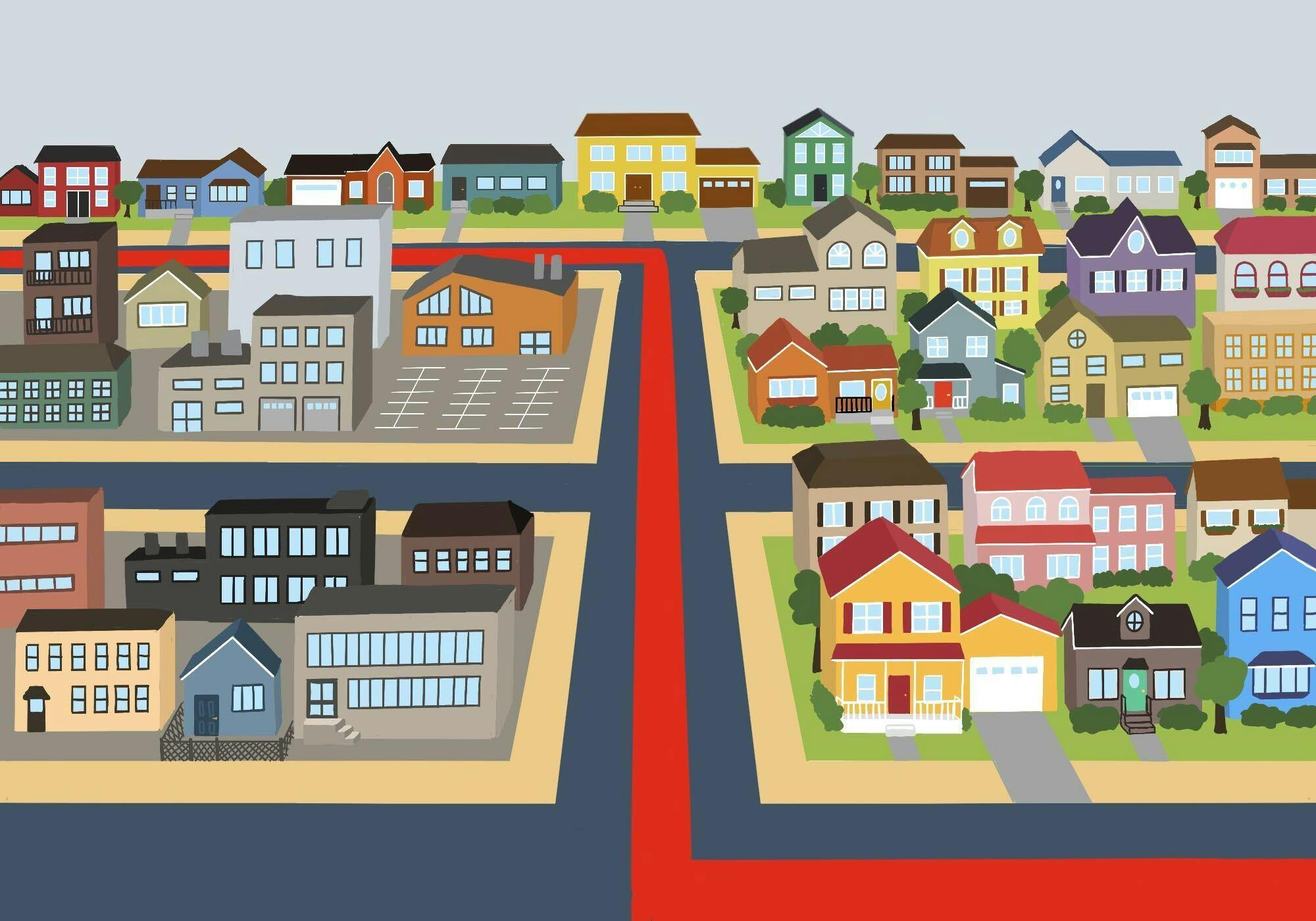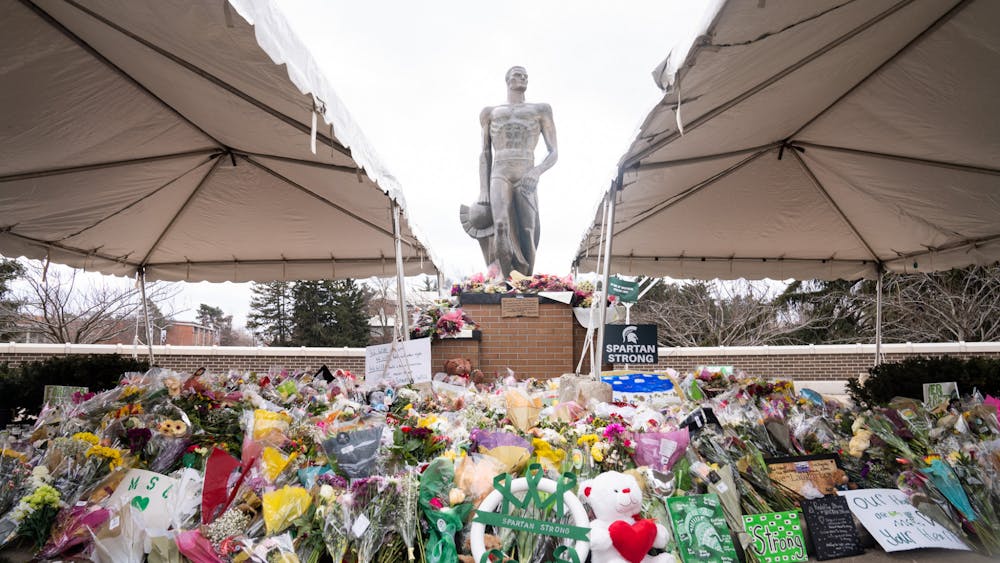Redlining and its direct correlation with environmental discrimination continue to infest neighborhoods today. The aftermath of I-496’s construction demolishing Black neighborhoods in 1970 are still being repaired, and studies highlight Lansing as being more prone to environmental injustice.
Organizations in the community are working together to combat the effects of redlining by targeting its roots and eliminating what can cause the financial divide and segregation that causes communities of color, specifically African Americans, to be affected by redlining. Even though it was outlawed, people still suffer from what remains of redlining because of the still-existing racial financial divide.
What does redlining do?
Craig Carpenter, professor in the department of agricultural, food and resource economics, conducted a comparative research study on redlining in East Lansing. In 1934, the federal government redline mapped Lansing. Redline mapping is when realtors outline -- with red -- the Black neighborhoods. This redline mapping proved that people of color’s neighborhoods were specifically targeted and labeled as "risky" to invest in because there were residents of color.
Carpenter clarified that the Home Owners Loan Corporation were not the culprits to redlining. They engaged in mapping out the residency of people of color, but the Federal Housing Association and other minor realty companies were the ones who actually engaged in the redlining.
Overlaying current demographic maps and the HOLC maps from 1930 showed parallels and visual connections with the redlining mapping and current demographics of East Lansing.
The wealth gap continues to exist generationally because redlining persists.
“We find that redline mapping reduced future incomes of Black children born into redline map cities by 7 percent, and on the other hand, it increased white people's incomes by about 3 percent and increased white people's housing values by 35 percent,” Carpenter said.
Carpenter also mentioned that the Black-white income gap increased by a third and the wealth gap increased by 80 percent in redlined areas.
The financial inequality that stemmed from redlining and redline mapping parasitizes education. According to Carpenter, African Americans who are redlined get less education on average, which impacts their financial status in the future, which continues the cycle of financial inequality.
Redlining not only affects the education and financial status of African Americans, but it also influences their mortality. Carpenter said that redline mapping impacts a third of the mortality gap between Black and White people. What drives that mortality gap is the environmental effects of redlining: exposure to harmful pollution, less access to healthy food options and less proximity to green areas.
How does it connect to environmental racism?
Environmental racism is the act of driving people of color to harmful environmental exposures. Linda Villarosa, journalist and author of "Under the Skin: The Hidden Toll of Racism on Health in America," said the African American community nationwide shoulders the majority of the burden of the national population. In her book, Villarosa discussed the correlation between redlining, environmental racism and health disparities among the African American community.
Understanding the phenomenon of redlining helped Villarosa "open her eyes" to environmental racism. She referred to the redlining mapping of the Federal government in the 1930s as one of her pieces of understanding.
African Americans are 75 percent more likely than other Americans to live in areas situated near environmentally hazardous facilities, Villarosa explained. She mentioned the Climate Reality Project as evidence for her claim, which shows different categories of environmental racism: frontline communities, fenceline communities and cancer allies.
Within the current political climate, Villarosa mentioned that the Environmental Protection Agency (EPA) and the Department of Interior are in jeopardy, and people of color and the poor will be affected the most. Villarosa said the Trump administration is in the process of dismantling government protections, denying climate change and supporting unregulated development of gas and oil. This will lead to harm and pollution to people who live near polluting facilities and will negatively impact those who are most vulnerable to climate change effects.
Along with an additional danger of the office of Environmental Justice being dismantled by the current administration, Villarosa stressed the importance of awareness and understanding the evidence of global warming and the impact the vulnerable population will bear.
The vulnerable population became the vulnerable population because of the impact of redlining and the financial gaps that were widened as a result.
Support student media!
Please consider donating to The State News and help fund the future of journalism.
What is an example of this in Lansing?
An example of redlining’s correlation with environmental racism in East Lansing is the destruction of Black neighborhoods for the construction of I-496. Black neighborhoods were pointed out through redlining and redline mapping, and were then destroyed, causing more pollution and forcing Black residents to relocate to less environmentally desirable areas.
According to the I-496 project, 6,749 people were displaced out of their homes in the Westside Neighborhood for this construction with no chance to object to the matter. Additionally, more than 800 Lansing homes and businesses were destroyed in the process of this highway construction.
Defending this decision, an article addressed to the citizens of East Lansing described the neighborhoods claimed the residence at the time to be "ghetto" and this process of demolition to break it up, thus "eradicating substandard housing in a major metropolitan area" and "breaking up a pattern of segregation in the area."
A documentary created in 2023 titled "They Even Took the Dirt" explores the aftermath and effects of the demolition of Black neighborhoods on a Lansing community. The documentary includes interviews of community members at the time, and how they continue to thrive today.
Another example of Lansing having environmental injustice can be seen in a study done by the University of Michigan professor Morgan Sherburne in 2019, identifying Lansing as a "hot spot" for environmental injustice. Cities identified as a hot spot have a higher concentration of minority and impoverished citizens, have a higher risk of hazardous environmental exposure, and a higher vulnerability because of social factors. The study didn’t go deeper as to why Lansing specifically was one of six cities identified as a hot spot, but Lansing was a city that has high clusters of census tracts highlighted with environmental injustice.
Communities "righting the wrongs"
The daunting aftermath of redlining and the existence of environmental racism does not stop communities from fighting back.
The Justice League of Greater East Lansing is one of the several community groups in Lansing who prioritize reparations to groups who are combating the effects of racism and inequality.
Willye Bryan, founder of the league, mentioned the three pillars of the league's actions: research to uplift communities, focusing on helping African Americans become homeowners and education scholarships promoting entrepreneurship to combat the financial gap. She hopes to increase wealth distribution for African Americans.
Bryan said that the government could be doing more to repair the aftermath of Black destruction, and what they’re doing is not enough in terms of "breaking the cycle." Lansing received a million-dollar grant for the 496 project and honored the Black community to build a cap over I-496, but Bryan believes that more reparations could be done, and more funds could go for improvements.
The league’s partnership with worship groups and churches provides essential support to the league. Bryan mentioned All Saints Episcopal Church in East Lansing, which researched its history of compliance to slavery and racial discrimination.
All Saints Episcopal Church discovered their past in preventing African Americans from purchasing homes. They then took financial actions through donations to racial justice organizations, and partnering with the Justice League of Greater Lansing. With the transition from passive to active acknowledgement, meaningful interventions and resource redistribution becomes possible. Then, reparations become possible.
Becoming a model for other advocacy groups has been one of Bryan’s ambitions for the league.
“The upshot is that we could plant a Justice League model in 15/20 communities around the country and use that same model to be able to generate funds, to then be able to distribute and share with the African American community,” Bryan said.
How can students advocate for reparations and environmental justice?
Students are often considered to be the future of activism, and there are several ways for them to be involved in becoming the change.
Villarosa mentioned HBCU student organizations that take aim in activism. Students can get involved with climate change activism with passion for environmental justice. Villarosa also recommended involvement with Climate Action Summit.
There was also emphasis on literacy. Villarosa referenced and suggested books “Waste” and “Holy Ground” by Catherine Flowers, and Dr. Robert Bullard who is known as the father of environmental justice.
Despite the lasting legacy of redlining and its correlation with environmental injustice persisting today, Lansing community members are taking action in hopes of a bright future. The first step to continuing their activism for students is understanding the locality and severity of what happened and involvement with the correct groups to advocate for change.
Discussion
Share and discuss “Communities combat Lansing area's lingering impact of redlining, environmental racism” on social media.


